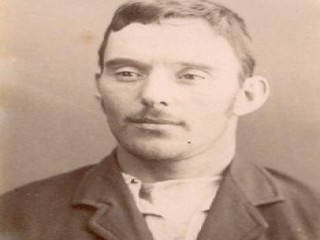
George Dean biography
Date of birth : 1867-11-14
Date of death : 1933-05-07
Birthplace : Albury, New South Wales, Australia
Nationality : Australian
Category : Arhitecture and Engineering
Last modified : 2011-05-31
Credited as : Ferry-boat master, and poisoner,
0 votes so far
Taken to Sydney by his 'foster-father', Dean worked for a blacksmith, and about 1884 began working for the North Shore Steam Ferry Co. On 10 July 1888 he was issued with his master's certificate, and from 1890 was master of the Possum, running between Circular Quay and Milsons Point at night. Dean, who was handsome with a trim moustache and a reputation for bravery, was popular with his passengers. On 8 March 1894 at St David's Anglican Church, Surry Hills, he married Sarah Annie Gaynor; she was known as Mary Seymour and was the daughter of Caroline (Catherine) Asbury, late Adams, alias Seymour, who had been transported to Van Diemen's Land in 1852 for pick-pocketing; her father was an ex-convict, Denis Gaynor. The Deans' marriage was soon a failure, with much mother-in-law trouble; however, Mary gave birth to a daughter on 26 December.
On 8 March 1895 Dean was arrested and charged with having poisoned his wife with intent to murder. Defended by Richard Meagher, he was tried before (Sir) William Windeyer, and convicted and sentenced to death on 6 April; the sentence was commuted to life imprisonment. The 'lemon-syrup case' created a sensation—there was a public outcry that Dean had not had a fair trial and was innocent; the Central and North Shore Defence committees were set up and public meetings held. Meagher and his partner William Crick, in parliament, mounted an attack on Windeyer, accused Mary Dean and Mrs Seymour of conspiracy and agitated for an inquiry.
On 7 May Francis Rogers, Q.C., and two physicians (Sir) Philip Sydney Jones and Frederic Manning were appointed to a royal commission. Among others Captain Thomas Summerbell, his employer, testified that Dean was 'trust-worthy, honest, courteous to his passengers'. Copious evidence showed that Mary Dean's mother was a woman of ill repute and an associate of criminals. The two doctors recommended release; but Rogers, the chairman, although acknowledging the many problems in the case, dissented. Dean was granted a free pardon on 28 June. He returned to his job and became master of a larger ferry, the Wallaby.
On 18 July Meagher, who was running for parliament, consulted Sir Julian Salomons, Q.C., about taking action against the Daily Telegraph for criticizing his handling of the case, and boasted that on 9 April he had tricked Dean into admitting his guilt. Salomons, in a professional dilemma, consulted the attorney-general John Want. Rumours began to circulate and questions were asked in parliament. On 24 September Dean petitioned parliament and soon followed it with an affirmation of his innocence. Salomons made a dramatic revelation in the Legislative Council and was savaged by Crick; on 4 October R. B. Smith, the chemist who had supplied Dean with poison, came forward. Dean was again arrested, confessed in writing on 9 October, and was sentenced to fourteen years imprisonment for perjury on 24 October. In December Meagher, Crick, Dean, Daniel Green and Jane Reynolds were tried for conspiracy to 'pervert the course of justice'; Dean and Meagher were convicted, but the conviction was quashed on appeal. Two appeals by Dean against his perjury conviction failed.
Mary Dean divorced her husband on 1 September 1896 and in 1900 married Benjamin William Bridge. Dean was released from Goulburn gaol on 8 December 1904 with remissions for good conduct and resumed his old position. By 1913 he had returned to the Riverina and worked as an engineer on Canoon station, Hay, until about 1930. He died of endocarditis in hospital on 7 May 1933 and was buried in the Anglican section of Hay cemetery. He was survived by his daughter.
The lawyers involved had little doubt of Dean's guilt but his motive remains obscure.
















